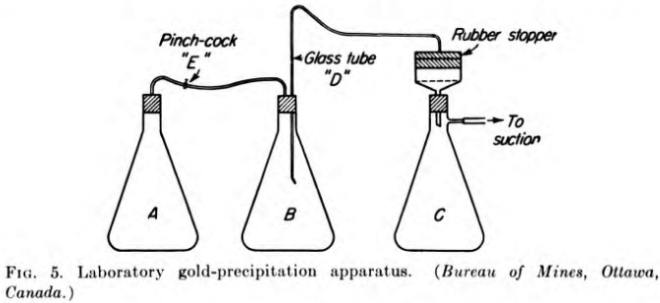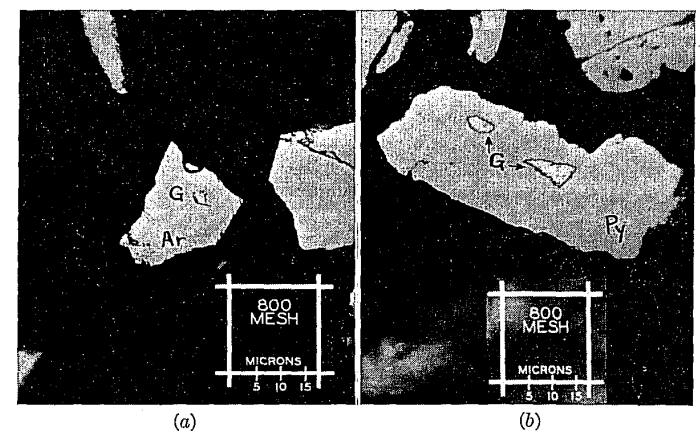Effect of Altitude & Pressure on Gold Leaching Kinetics

Altitude-pressure and Standard Saturation Curves: Chart A (Fig. 55) is used to determine barometric pressure at various altitudes; Chart B is used to determine standard saturation values for various temperatures and pressures. In Chart A, altitudes, in feet, are plotted on the horizontal axis and pressures, in millimeters, on the vertical axis. To find the pressure […]
Gold Metallurgy & Leaching in Cyanicides

Cyanidation as applied to ordinary gold and silver ores is a relatively simple process. When cyanicides {cyanide-consuming elements) are encountered in small amounts in the treatment of such ores, the various schemes already discussed, such as use of a lead salt or wasting barren solution, can usually be resorted to and successful operation maintained. When, […]
Gold Precipitation Test

The following method of testing the precipitation of gold in pregnant cyanide solutions has been adopted by the Ore Dressing and Metallurgical Laboratories, Bureau of Mines, Ottawa. The apparatus consists of three Erlenmeyer flasks of 3000-cc capacity (see Fig. 5). Flask A is for evacuation of air from the pregnant solution, flask B is for precipitation, and […]
Heap Leach Amenability Test

In cases where fine grinding is not necessary to liberate the gold values, it is often possible to classify the coarsely ground ore into a sand and slime product (at, say, about 200 mesh) treat the former by so-called percolation leaching and the latter by the agitation method that has been described above. This is […]
Gold Leaching : Methods and Uses in Mineral Processing

The following gold leaching test procedure has been found satisfactory for carrying out cyanide leaching tests by agitation. Winchester bottles of about 2.5- to 4-liter capacity are used. It is convenient to number the bottles and determine their tares, etching the figures on the bottle by means of hydrofluoric acid and then marking over the etching […]
Prepare Gold Ore Sample for Laboratory Testing
Before an ore is tested for its amenability to the cyanide process, it should be subjected to a preliminary examination in order that the experimenter may become familiar with its general physical and chemical characteristics. Knowledge so obtained will be of value in laying out the most effective testing program and may point to special […]
How to Sample Gold Ore

The value of any series of experiments depends entirely upon the kind of sample of ore provided for the test. It must represent, wholly and completely, the character of the material that will be treated in the plant to be designed and constructed. If it does not, the tests will be useless or, worse, misleading. In […]
How to use a Microscope to Help Solve Gold Metallurgy

The assistance that can be obtained from the microscope in solving ore-dressing problems has been increasingly appreciated in the recent years, as attested by the frequency of papers on the subject. Observations by means of binocular microscopes with magnifications up to 100 diameters and corresponding resolutions have long been common practice, and such observations are a great […]
Gold Leaching

Gold Leaching Process Circuit NO. CY-1 This leach plant shows the continuous counter-current decantation system, in which all the ore is first reduced to a very fine state in the grinding mill-classifier circuit, in a Gold Leaching solution. The slime overflow of the classifier, usually 70%—200 mesh, or finer, is sent to the first thickener, known […]
Gold Cyanidation Process

The gold cyanidation process is the most important method ever developed for extracting gold from its ores. The reasons the widespread acceptance of cyanidation are economic as well as metallurgical. It usually obtains a higher recovery of gold than plate amalgamation and is easier to operate than the chlorine or bromine process. It produces the final product in […]
